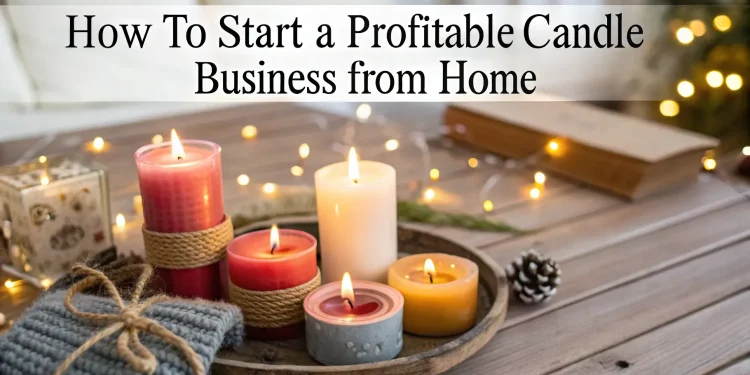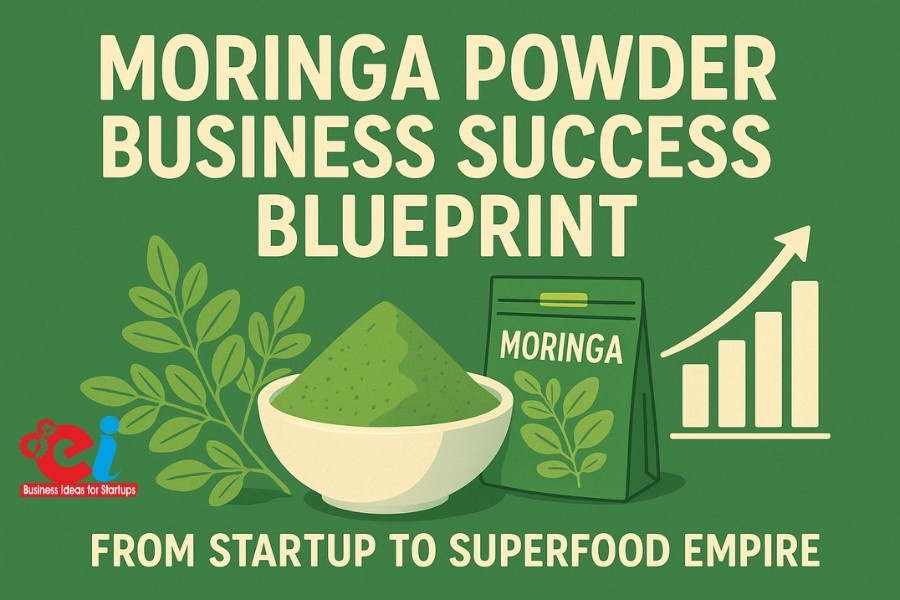Why Now Is the Right Time to Start a Candle Business
Candles have advanced from their original role as a merely source of illumination. They’re now a symbol of mood, ambiance, well-being, and lifestyle. It doesn’t matter if it’s a handmade soy wax candle for relaxing aromatherapy, or a gorgeously created candle that is given out in the month of Diwali the value of these candle business lies not just in their functionality, but also in the feelings they create. If you’re seeking to establish an innovative, flexible and lucrative business, candle manufacturing at home provides a powerful starting point.
The shift in the global culture towards interior decor, mindfulness, and environmentally-friendly products has helped push candles that are handmade to the top of the list of demands from consumers. In India, this trend is being driven by rising disposable incomes, increasing e-commerce sales, and growing interest in artisanal-driven brands. The candle industry is one of the few categories of products that combines creativity, craft with a low entry barrier and steady growth, making it a great option for small-scale and startup manufacturing units as well.
This article will provide you with a complete guide for creating a candle-related business at home. It covers market insight as well as manufacturing, product development, branding, as well as long-term development. If you’re considering developing an interest into a mission-driven business, then read this article.
The Growing Candle Market in India and Abroad
Candles aren’t just only available during ceremonies or festivals. They’re now items that can be that are purchased in a variety of categories, including gifting and wellness, décor, and even spirituality. In India cities and semi-urban stores are reacting in this direction, and high-end candle business becoming popular in the millennial and Gen-Z market.
The market in the world has already reached 13 billion dollars and continues to expand due to increasing demands in the natural and luxury segments. India is still a developing market, but has seen rapid growth due to its massive middle-class base and rapid adoption of the internet and the booming gifting culture. A shift away from artificial paraffin candles to beeswax, soy or coconut oil is creating demand, particularly from eco-conscious customers.
According to research conducted by industry experts according to research, the market for Indian candles is projected to grow by more than 13% between 2023 and 2028. This prediction is not only restricted to the major cities. The Tier II and 3 towns, facilitated through social commerce platforms and the influencers of vernacular, are now emerging as a major hub for consumption of customized candles.
Export prospects are also promising. Indian hand-crafted candles are becoming increasingly sought-after in international markets, particularly those that have an interest in Ayurveda and health, and spiritual products. Countries such as that of US, UK, UAE and Australia are the main importers of artisanal and hand-poured candles that are made in India.
Related: Start a Chlorinated Paraffin Wax Business in India: High Demand, Multi-Industry Use
Recognizing the Appeal for Candle business Manufacturing from Home
There are a variety of convincing reasons for why candle manufacturing is a great idea for an online business, particularly for those who are just beginning their ventures. It is simple to start and the primary ingredients–wax scent, wicks, and containers are simple to locate and use.
A small area of production like a tidy kitchen area or spare room could be transformed into an office. The initial cost of tools is not too high as the machinery needed is very minimal, and the product can be produced in small batches to gauge the reaction of customers. This is essential for those who aren’t sure about the size of market, pricing or even the best packaging strategy to the time of launch.
Home-based candle manufacturing can also provide an opportunity to be creative. It is possible to experiment by using seasonal aromas attractive designs, or even custom labels. This allows you to keep your brand current and distinct without the need for a large capital investment.
Additionally, candles are light and have a long shelf time, and are simple to ship, making them perfect for sales via digital platforms such as Instagram, WhatsApp, Shopify, Amazon, and Flipkart. Even a simple setup can yield strong profits particularly if you place your company in a specialty or premium segment.
How the Candle business Manufacturing Process Works (Step-by-Step)
The manufacturing process for candles can seem easy, but it requires meticulous attention to the smallest of details quality control, as well as an understanding of the heat, fragrance proportions, and curing time.
It starts with choosing the best wax. The majority of entrepreneurs select paraffin or soy, beeswax as well as gel wax. Paraffin is affordable and simple for use however it is it is not environmentally friendly. Soy wax, made of soybeans, can be biodegradable and has a cleaner burn and is appealing to a healthy crowd. Beeswax is an organic byproduct of honey production and comes with distinct aroma that is unique and gel wax is widely used in embedded candles because of its clear finish.
The wax is then melted in the double boiler to avoid the direct warmth from burning. When it has reached the ideal temperature (typically between 70°C–85°C) fragrance colors and oils are added. Essential oils like lemon, lavender and eucalyptus are often used, however synthetic fragrance oils can also be selected for a stronger scent and cost-savings.
After a thorough mixing After a thorough mixing, the wax is put into molds or jars which have wicks pre-placed. The placement on the wick’s location is essential to ensure that the candle is evenly burning. The candle business is allowed to cool, set and cure. The curing process may take between 24 and 72 hours based on the type of wax used, following which the candles are labelled then packaged and ready to be sold.
The most important step in the process is testing. Each batch should be tested for performance on wicks and fragrance throw, as well as time to burn, and the safety of the container. These are crucial particularly if you are planning to sell your products to high-end customers or export your goods.
Developing Candle Products That Sell
The key to success in the business of candles is in understanding the psychology of consumers. Consumers don’t buy just candles, they purchase experiences. A candle with lavender promises peace and a scent of cinnamon evokes warm and festive feelings, while the jasmine scent can stir nostalgic feelings. The candle you choose to use must be in sync with the mood, occasion and a sense of identity.
Start by creating a small but clearly defined collection. Candle business can be grouped into themes such as fragrances that are seasonal (monsoon mist winter spice) or based on personality (for those who are creative or lovers, for yoga enthusiasts) or even boxes that are based on the occasion (weddings, Diwali, corporate gifts). This can help customers understand the purpose of their cases, thereby increasing the likelihood of the likelihood of conversion.
Jar color, font and message are all important. A customer who is discerning will see the quality of your packaging. The buyer who is spiritual will care about the quality of ingredients. The person who is a wellness consumer will want essential oils and eco-friendly branding.
Packaging isn’t just for protection, it can be a tool for storytelling. If you decide to use metal tins, kraft boxes glass jars, glass containers, or eco-friendly bags, ensure that the packaging you choose is in sync with your brand’s story and is suitable to ship.
Related: Candle: Making and Designing Trends
Branding and Marketing: Building a Candle business Brand That Stands Out
In a marketplace crowded with candle brands branding can help your brand make your mark. Your brand must have an identity that is distinct: luxury or wellness, joyful spiritual, artistic or.
Start by defining your brand’s voice as well as your logo and the style of packaging. Set up a photo studio which showcases candles in a home setting that have warm light and décor. Create compelling content for your product, such as stories about the process of creating scents or how candles are hand-poured and poured, behind-the-scenes photos, or reviews from customers.
Your online storefront can be as easy as an easily-managed Instagram page, a WhatsApp request form. It could also be even a fully-fledged Shopify store. Use Reels demonstrations of products as well as scent guides and “how to use” videos. Collaborations with micro-influencers and local brands of decor also aid in driving traffic.
Offline visibility via pop-ups, exhibits or craft fairs within your town can boost trust building. Give free samples, bundle discounts, or special-edition scents to increase word-of-mouth.
Brand loyalty is not based on providing the most affordable product, but the most relatable, and emotionally meaningful one.
Common Challenges and How to Overcome Them
Making candles requires careful management of the temperature, proportions of ingredients and timing. Issues with fragrance throw sweating and the frosting (white coating) as well as tunneling (uneven burn) are typical and require testing and modifications to formulations.
The shipping is a different issue. Jars can crack, and wax may melt. Making use of bubble wrap, eco-friendly fillers and thermally insulated boxes will reduce the number of the number of returns. Labeling clearly on burning protection, the trimming of wicks and storage can help reduce complaints.
The possibility of scaling from home could cause operational stress. If demand increases, think about hiring a small studio, or partnering with an artist to scale up. Employ help with packaging and photography or management of social media to ensure quality at every grow.
Legal and Regulatory Considerations
At first the candle business might not require factory-quality certifications. As you grow or plan to sell to retailers, think about getting:
- Udyam MSME Registration
- Trademarks for protection of brands
- Safety and fire compliance for storage of wax
- GST registration for revenue that is greater than the amount of Rs20 lakh per year
The proper tracking of batches as well as burn testing and labeling of the product are crucial for exports or B2B partnership.
For more information check out this video
How NPCS Can Help You Scale
NIIR Project Consultancy Services (NPCS) has been a trusted source of knowledge for a multitude of entrepreneurs who are looking to get into manufacturing.
- NPCS creates Market Survey cum Detailed Techno Economic Feasibility Reports which assist you in assessing demand, the location strategy, compliance and profit.
- The reports cover details on the process of manufacturing, suggested raw materials, the ideal plant layout, and anticipated results.
- NPCS assists in evaluating potential of establishing new industries, especially for small- and medium-sized manufacturing enterprises that want to grow efficiently.
Final Thoughts: A Bright Business That Begins at Home
The Candle business isn’t solely about wicks and candles. It’s about mood, light expression, celebration, identity and telling stories. For entrepreneurs, particularly those operating from home this business offers the rare mix of affordable, emotionally connectivity as well as digital scalability and export possibilities.
If you’re just starting out with gift sets for festivals or planning to create India’s next leading scent for your home There’s a chance, and it’s shining. By focusing on your passion, consistency and a strategic approach you can transform your home-based concept into a viable company that is able to light homes across the nation and across the globe.


























